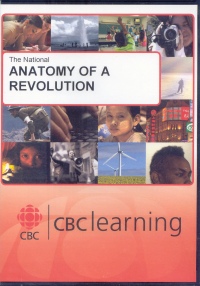| ________________
CM . . . . Volume XIX Number 3 . . . . September 21, 2012
excerpt:
On December 17, 2010, a policewoman approached Mohamed Bouazizi, a fruit vendor in Sidi Bouzid, Tunisia, demanding a bribe. The young man, breadwinner for a family of eight, refused and was severely beaten. He went to the town hall to protest this injustice, threatening to set himself on fire. Tragically, threat became reality. Friends and relatives demonstrated outside the building where the incident occurred and their protests were captured on a cell phone video. That video was posted on Facebook and Twitter, and then, picked up by the Al Jazeera, after which it had an audience of millions. Despite the televising of Tunisian President Zine Ben Ali's visit to the hospital bed of the severely burned Bouazizi, public sympathy turned against the president, especially once "copycat" self-immolations began to occur in Saudi Arabia and Egypt. When public demonstrations manifested increasingly greater levels of violence, Ben Ali resigned in disgrace and fled the country. The Tunisian protests were a catalyst for Egyptians dissatisfied with nearly thirty years of President Hosni Mubarak's repressive rule. The political climate of Egypt was already tense as a result of the 2010 election, after which President Hosni Mubarak made it clear that he intended to give power over to his son, Gamal. Ben Ali's flight from Tunisia made it possible for Egyptians to believe that they had the power to do something: "Yes, we can. There are people who look like us, exactly like us, and they did it." Through amazing grassroots organization – one journalist estimated that little more than 20 people were behind the planning of the protests – social media was used by tech-savvy young Egyptians to assemble and demonstrate their discontent. In retaliation, Egyptian state television began a deliberate campaign of disinformation, blaming a variety of outside forces for the protests: first, the Israeli government, and then, when that was disbelieved, the Muslim Brotherhood. Al Jazeera, the independent Arab satellite news network based out of Qatar, became the only source of reputable broadcast news about the protests in Tahrir Square. The situation escalated with the circulation of cell phone video footage that showed Egypt's hated and feared Secret Police torturing and abusing prisoners. Finally, Mubarak called in the army, but their shooting of both pro- and anti-Mubarak forces with both rubber and real bullets kept emotions at fever pitch. On January 28th, 2011, a police truck ran rampant through a crowd of people, killing and maiming anyone in its path. The next day, Mubarak appointed a new Vice-President, Omar Suleiman, the former head of the Ministry of Intelligence. One of Suleiman's first acts was to televise a broadcast blaming foreign journalists for fomenting insurrection. On February 2nd, a group of pro-Mubarak supporters, riding horses and camels, charged into the crowds in Tahrir Square, but, the crowd turned on them and soon the riders were attacked and dismounted. When Mubarak finally gave in and stepped down from power, the crowds turned euphoric. Since February of 2011, two other dictators have been deposed (Libya's Muamar Ghaddafi and Yemen's Ali Abdullah Saleh) and other repressive regimes in the Arabic world are on a state of high alert. One thing is certain: "The Arab world at this moment in time is well-informed. People are highly politicized. People cannot be deceived. The masses are not as [they] used to be. There is Al Jazeera, there is Facebook, there is Twitter, there is Internet. No one can deceive the public." (Wadah Khanfan, Director General for Al Jazeera). Governments which promise democratic reform must mean what they say, and say what they mean. Electronic communication and social media have forever changed the nature of politics, political demonstration. Anatomy of a Revolution provides an interesting perspective on how the rapidity of digital communication makes it possible to incite and assemble political protest. Video footage, whether broadcast by news media or by mobile devices, has tremendous power, and this documentary provides extensive coverage of the violence and suffering which occurred during those 18 days of revolution in Egypt. There are plenty of graphic and disturbing images, whether of destructive violence, or of its victims. Although the film provides an overview of the politics of discontent, I believe that more coverage of the social problems besetting Egypt (extreme poverty, massive unemployment, a young population with little in the way of future prospects) would have provided more background to the events of the "Arab Spring". Still, Anatomy of a Revolution is worth acquiring for high schools offering courses in modern world history and political studies. Recommended. Joanne Peters, a retired high school teacher-librarian, lives in Winnipeg, MB.
To comment
on this title or this review, send mail to cm@umanitoba.ca.
Copyright © the Manitoba Library Association. Reproduction for personal
use is permitted only if this copyright notice is maintained. Any
other reproduction is prohibited without permission.
NEXT REVIEW |
TABLE OF CONTENTS FOR THIS ISSUE
- September 21, 2012.
AUTHORS |
TITLES |
MEDIA REVIEWS |
PROFILES |
BACK ISSUES |
SEARCH |
CMARCHIVE |
HOME |
